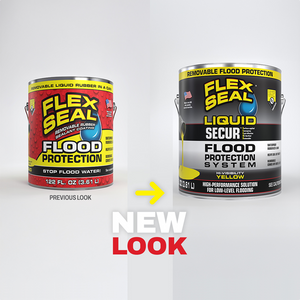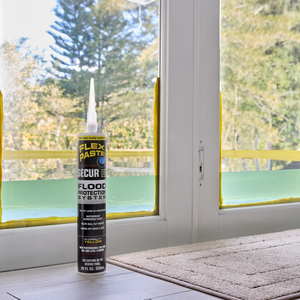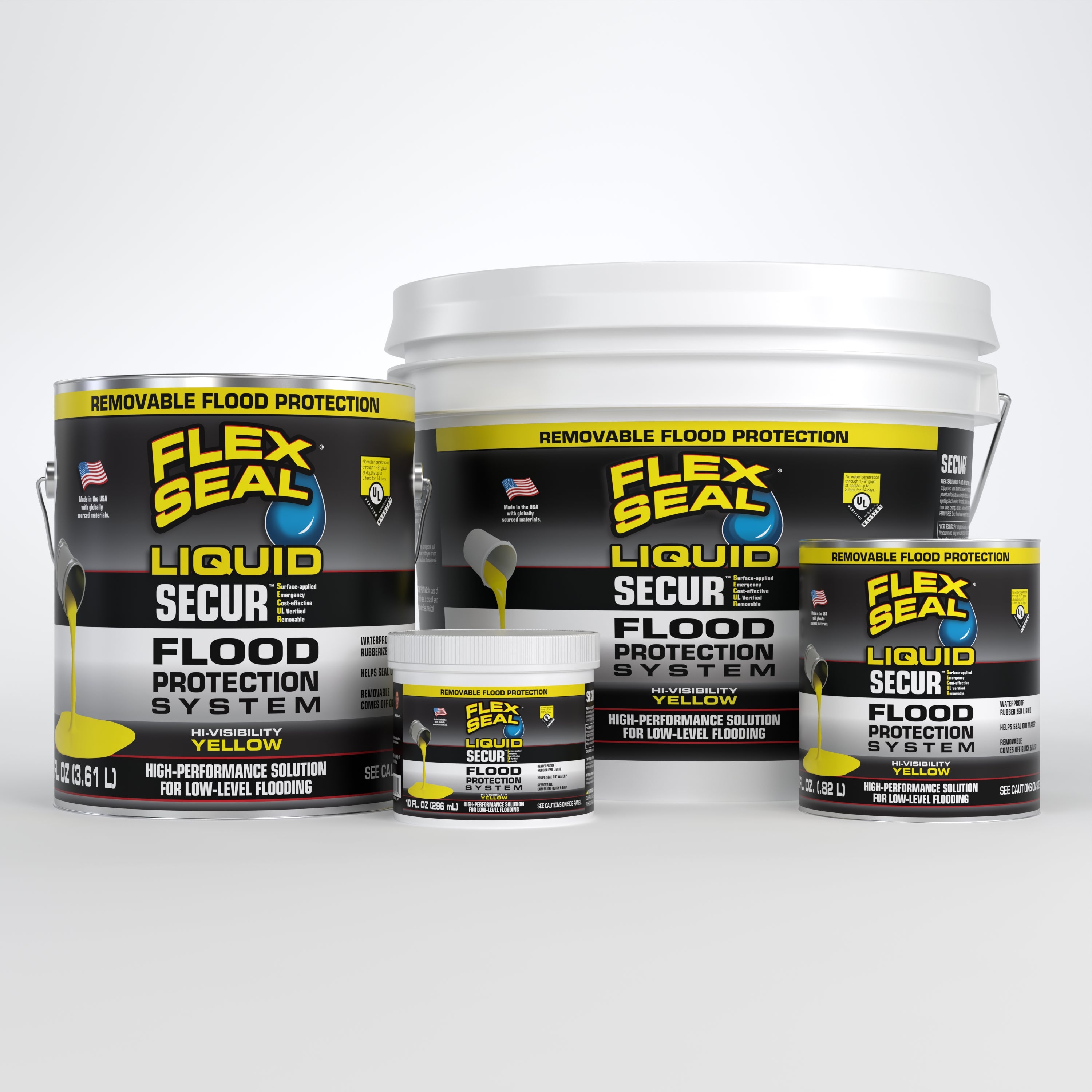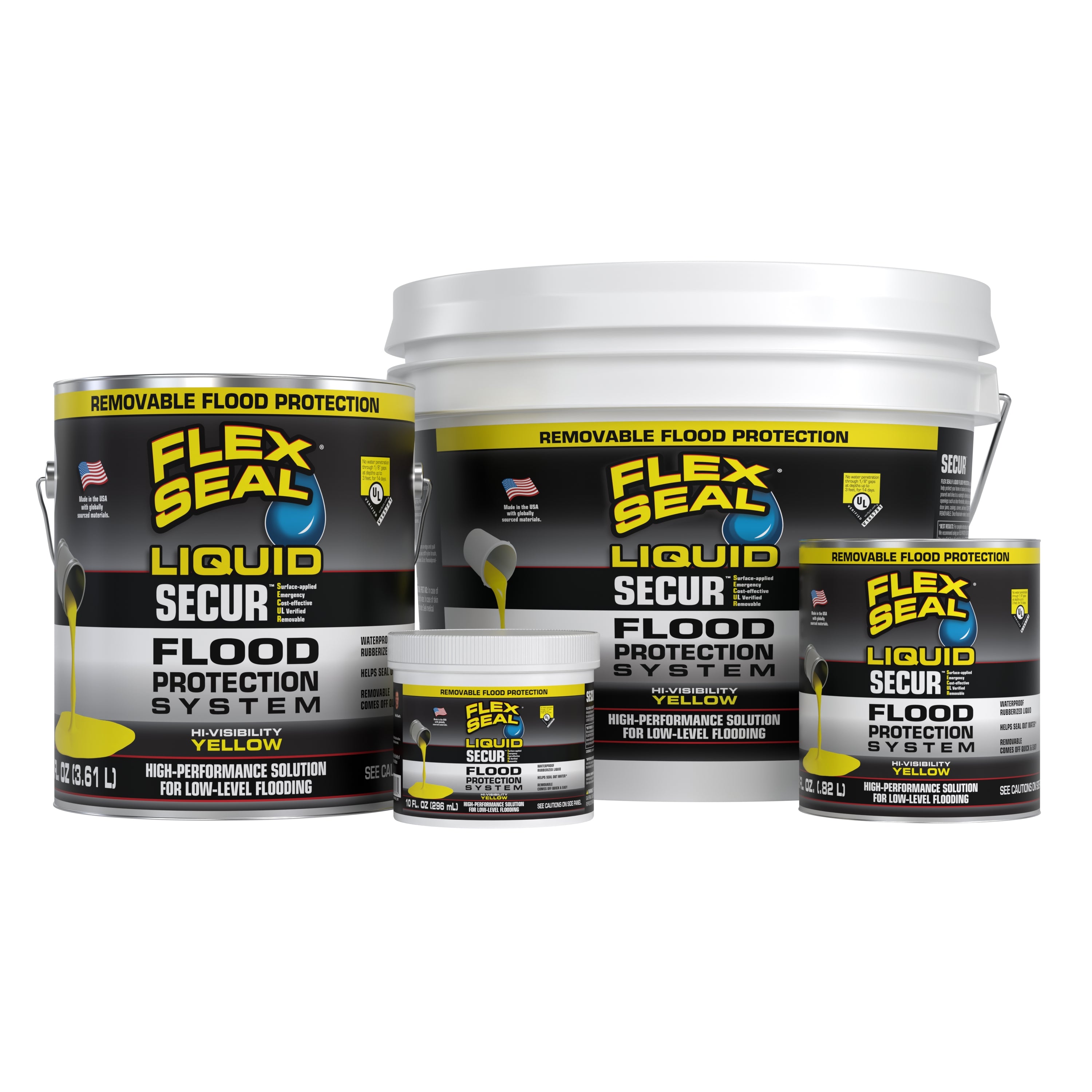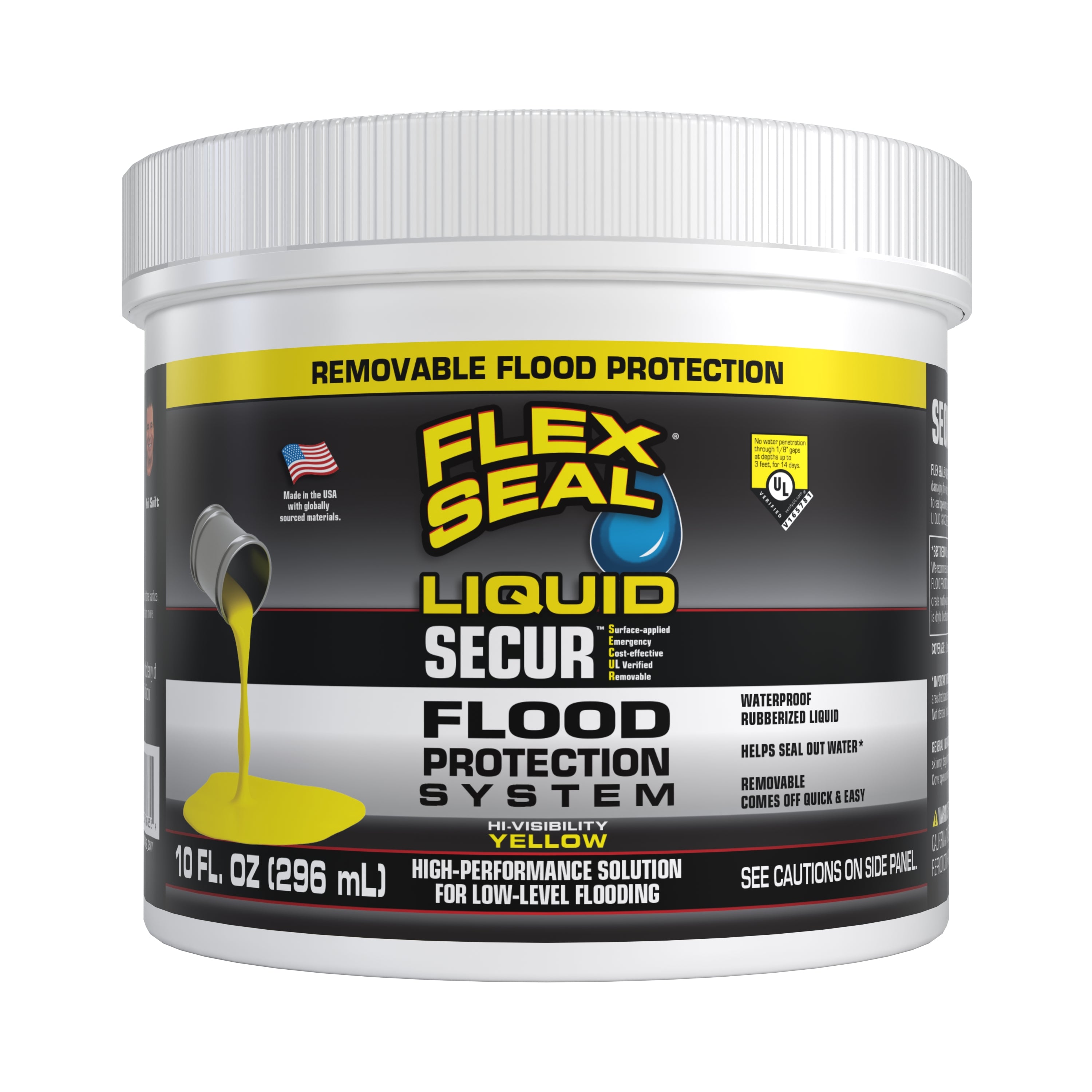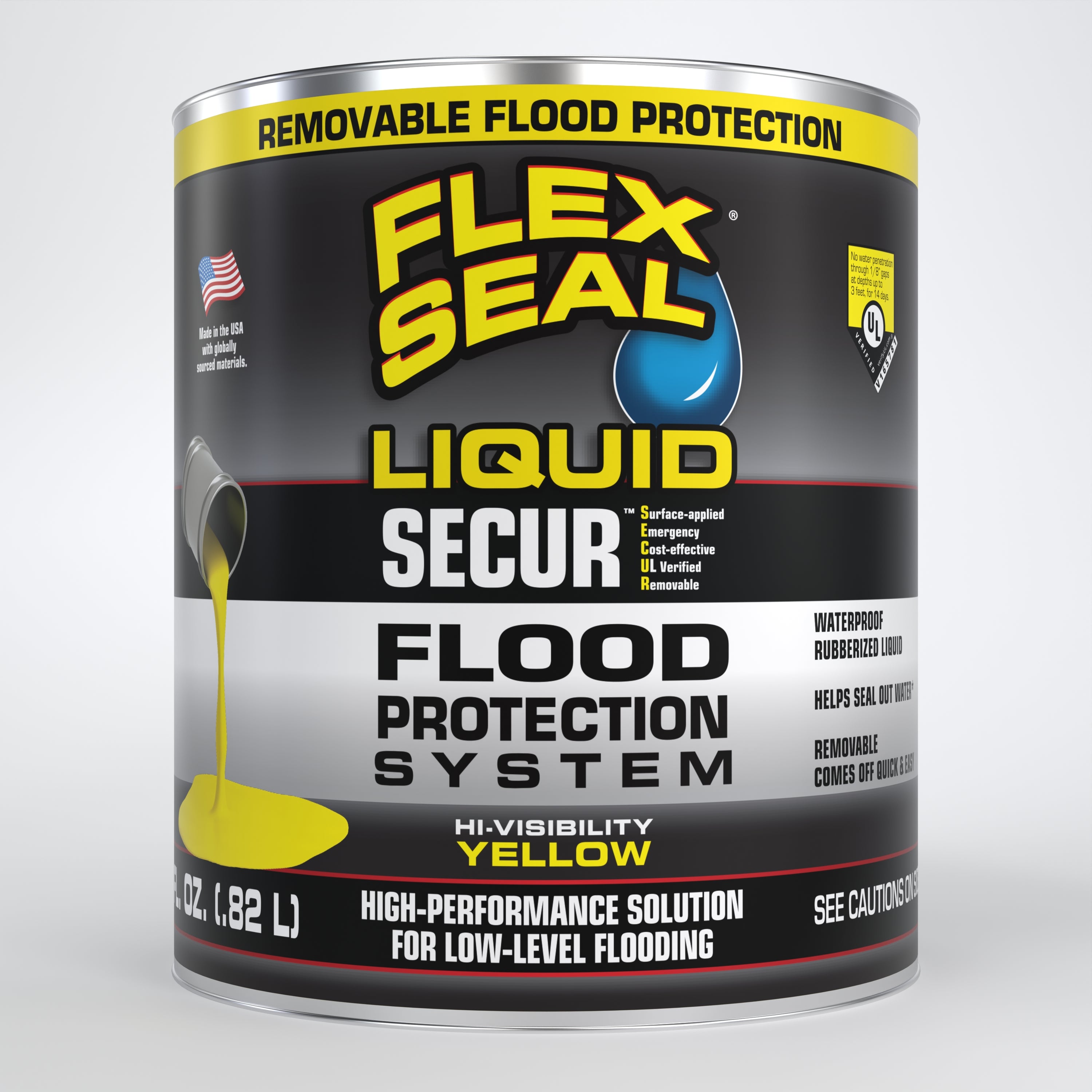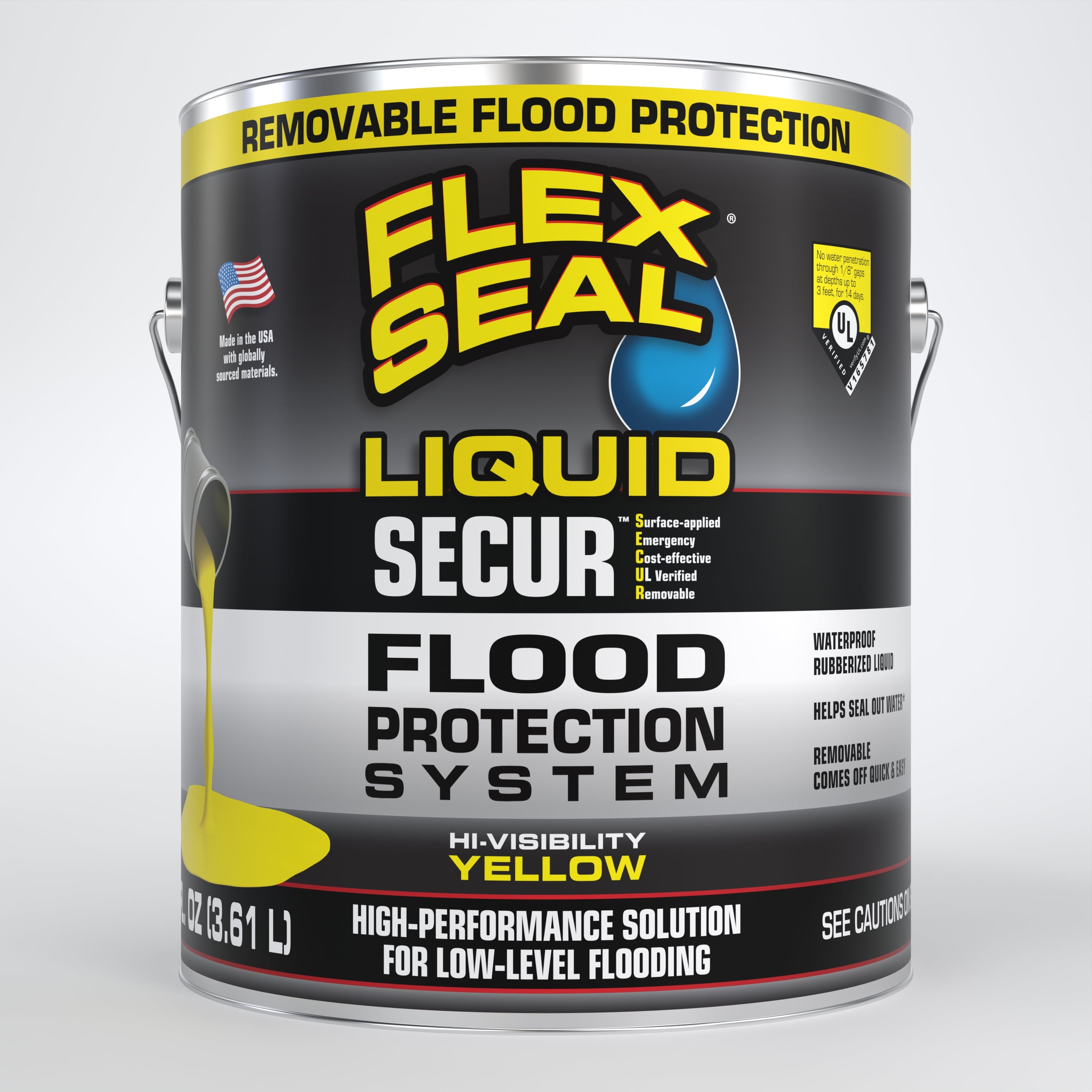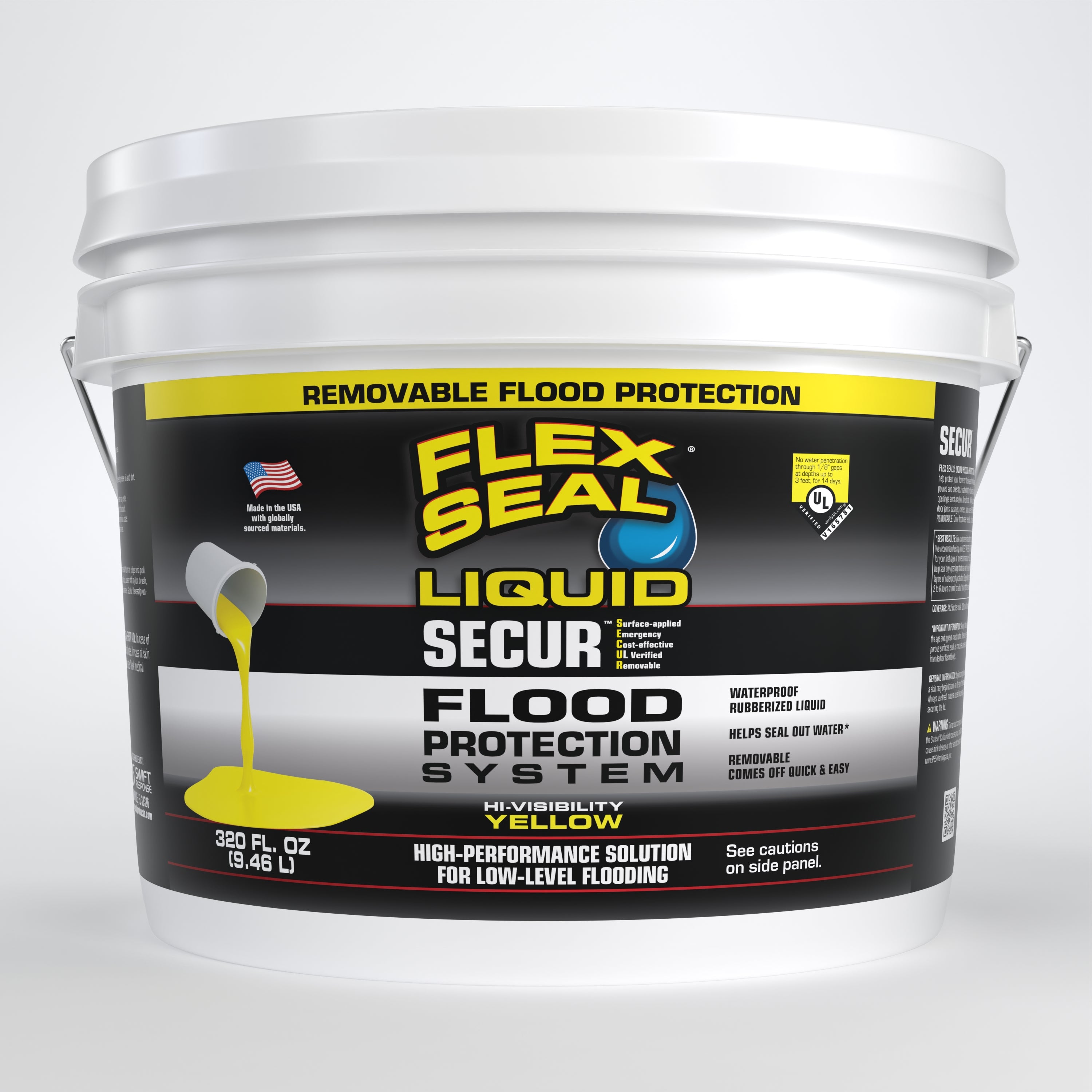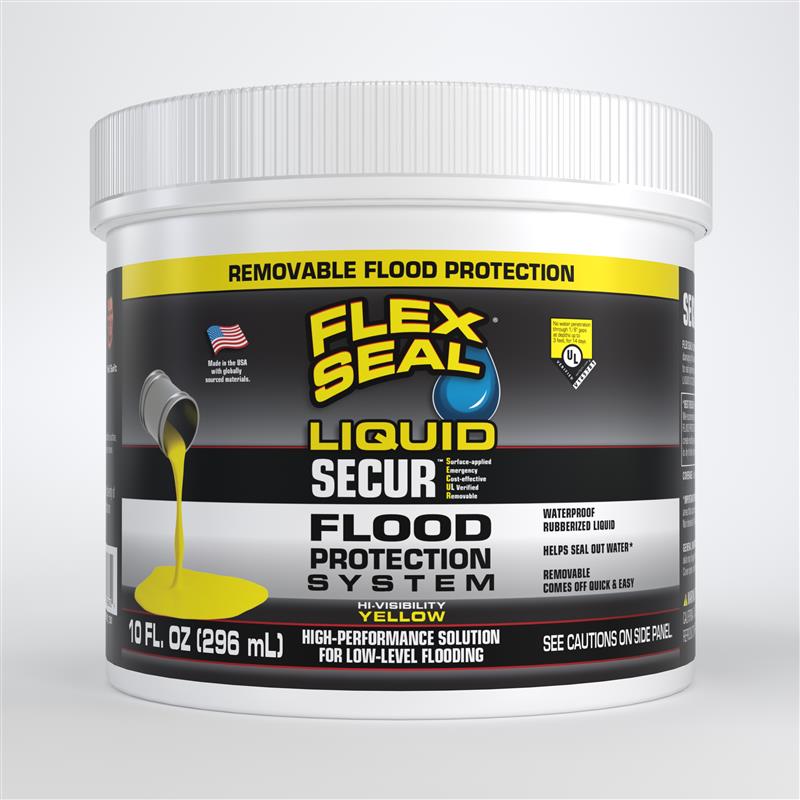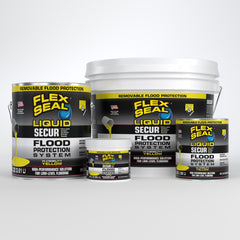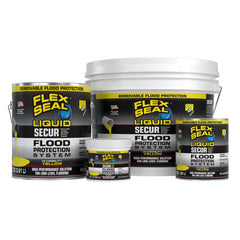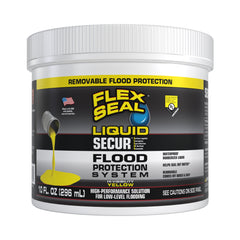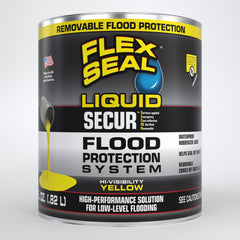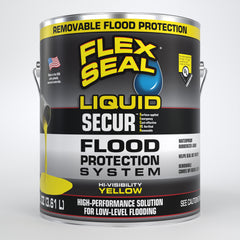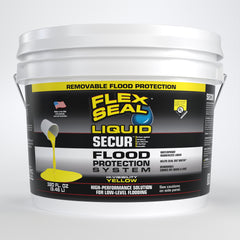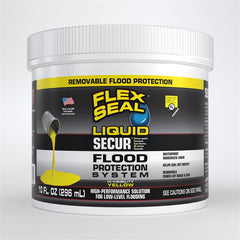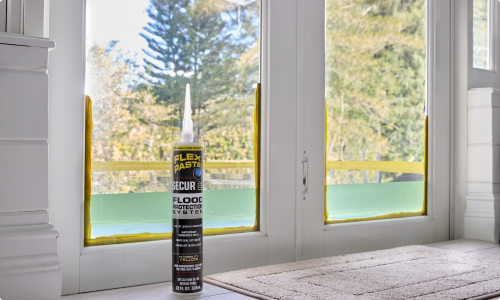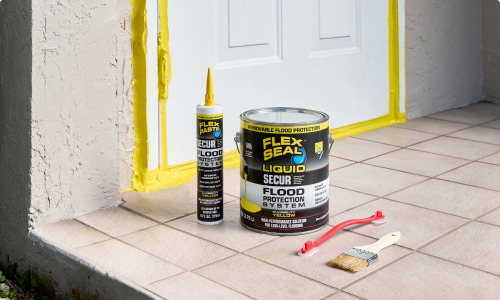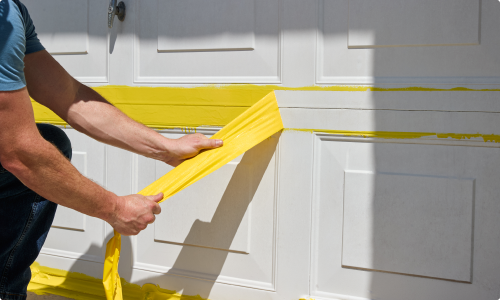
Removable waterproof liquid that helps stop floodwater.
- $19.99
- $19.99
- Unit price
- / per
The SECUR Low-Level Flood Protection System utilizes Flex Seal Flood products, which are specifically designed to work TOGETHER to create multiple layers of super-strong, waterproof protection, and to be easily removed after floodwaters recede. They can help slow down or even stop low-level water from entering structures.
Flood Liquid should be used primarily as a final layer of protection to help seal any small pinholes or openings that may have been missed. Brush a generous amount directly on top of our other Flood Protection products, making sure the coat is wider and overlaps previous layers of protection. Allow dry as long as possible before floodwater arrives. Liquid is ready to start holding back water in as little as 1 hour*.

When used as directed, our Flood Protection Liquid has been independently verified by UL Solutions to hold back 3ft of water for 14 days on gaps up to ⅛ inch. Tested in laboratory settings.
Patent Pending for Products and Uses.
California Residents:  WARNING: Prop 65 Warning(s)
WARNING: Prop 65 Warning(s)
DRY TIME
Flood Liquid is ready to start holding back water in as little as 1 hour, depending on temperature, humidity, and thickness of coat.
COVERAGE
The coverage for one coat of the 10oz Flood Liquid, when applied 2" wide, is approximately 20 linear feet.
The coverage for one coat of the 28oz container of Flood Liquid, when applied 2” inches wide, is approximately 56 linear feet.
The coverage for one coat of the 122oz Flood Liquid, when applied 2” inches wide, is approximately 244 linear feet.
The coverage for one coat of the 320 oz flood liquid, when applied 2” inches wide, is approximately 590 linear feet.
IMPORTANT INFO
Always follow local warnings regarding evacuations. Depending on the age and type of construction, there may be areas that cannot be seen or sealed. Unsealed porous surfaces, such as concrete, can seep water during extended underwater exposure. Our Flood Protection products are NOT intended for flash floods, extreme winds or water pressure, to protect against flying or floating debris, or if there is structural damage to the building.
ADDITIONAL INFO
All of our Flood Protection Products are Patent Pending for both products and uses. Made in the USA with globally sourced materials. Color of product is high-visibility yellow. For more information on UL testing, click here. 53% savings based on price per ounce, compared to our 10 oz size.
HOW TO USE FLOOD LIQUID:
• Protective gloves, clothing, and eyewear are recommended.
• Use only on the exterior structures.
• Make sure the area being sealed is clean, dry, and free of grease, oil, and dirt.
APPLICATION:
• Remove lid and stir well before use. Do not shake.
• Brush a generous amount directly on top of our other Flood Protection products, making sure the coat is wider and overlaps previous layers of protection.
• Allow dry as long as possible before floodwater arrives.
• Liquid is ready to start holding back water in as little as 1 hour*.
• Liquid begins to cure immediately once exposed to air, so be sure to recover container as soon as possible to help prevent a skin from forming on top of the product.
• Any cured product should be removed before use.
• Always use fresh product to seal openings. *Dry time may vary based on temperature, humidity, and thickness of coat.
REMOVAL:
Grab a small portion of material from an edge and pull away from structure. Using a small pair of pliers may be necessary. If any residue is left on the surface, use a stiff nylon brush, paper towel or rag with denatured alcohol to clean the area.
OFTEN PURCHASED WITH
VIEW ALL- $19.99
- $19.99
- Unit price
- / per
- $19.99
- $19.99
- Unit price
- / per







